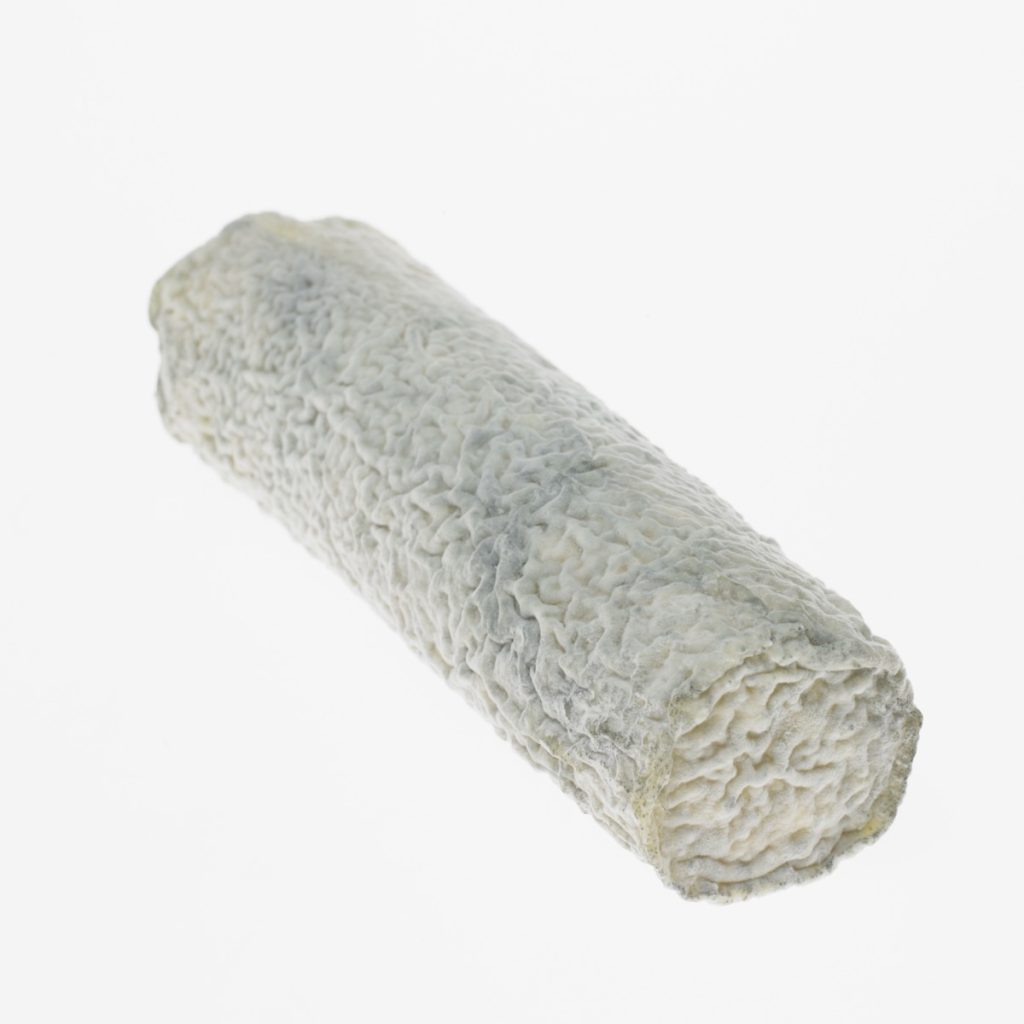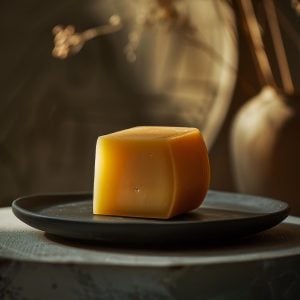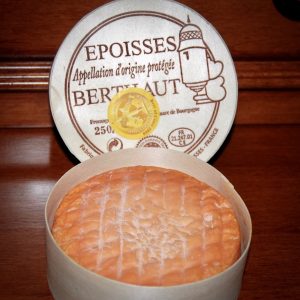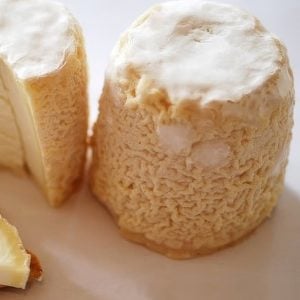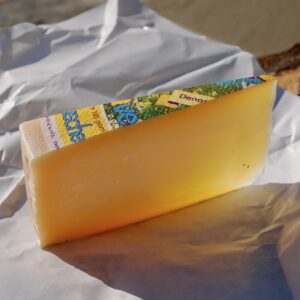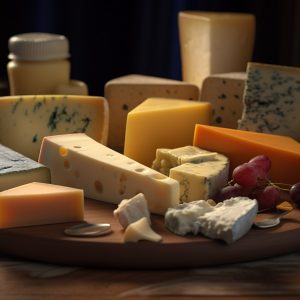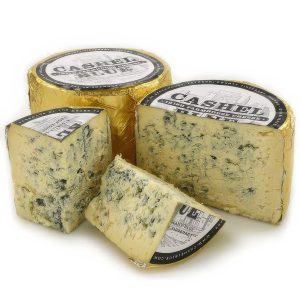Sainte Maure Caprifeuille – One of My New Favorite Goat Cheeses
If you enjoy goat cheese and are looking for one to serve to friends or enjoy at home with a piece of French bread, I recommend you look at Caprifeuille.
I was looking for a cheese to serve at a small dinner party with some friends over the holidays and asked my friend Cheese-man Jack for a recommendation, and he came up with Sainte-Maure Caprifeuille.
At first, he wanted to sell me an older version of this cheese, “same cheese only aged 2 – 3 months longer,” but much firmer with a stronger taste. We talked about it and decided to go with the younger brother, who is just as good but slightly milder.
Sainte Maure Caprifeuille is a renowned artisanal cheese from the Loire Valley in France. This goat’s milk cheese is named after the small town of Sainte-Maure-de-Touraine, where it was traditionally made.
It is characterized by its distinctive log shape and ash-coated rind, which develops a velvety, wrinkled texture as it matures. Beneath the surface lies a creamy, ivory-colored interior with a smooth and delicate taste, balancing tangy and earthy flavors.
Sainte Maure Caprifeuille is highly regarded for its complex and nuanced profile, making it a beloved choice for cheese connoisseurs seeking a unique and satisfying culinary experience.
Characteristics
Characteristic | Description |
| Milk Source | Goat’s milk |
| Texture | Soft, creamy, slightly crumbly |
| Aging | Typically aged 10 to 20 days |
| Flavor | Tangy, fresh, mildly acidic with subtle herbal and grassy notes |
| Aroma | Lightly goaty, fresh, slightly earthy |
| Rind | Natural, thin, often with a light white mold bloom, sometimes with faint straw coloring |
| Interior | Pale ivory to white, soft and moist, with small irregular holes |
| Size | Cylindrical log shape, usually around 12-15 cm long and 4-5 cm diameter |
| Versatility | Excellent fresh cheese, good for salads, appetizers, and light cooking |
| Region | Loire Valley, France |
| AOC/Protected Status | Yes, Protected Designation of Origin (PDO) under French regulations |
| Milk Treatment | Usually raw milk or thermized (depends on producer and regulations) |
| Coagulation Type | Lactic coagulation |
| Shape | Cylindrical log, sometimes tied with straw or marked with a straw running through the center |
| Color (Interior/Rind) | Interior: white to pale ivory; Rind: off-white to light gray with some straw coloring |
| Shelf Life | Best consumed within 3 weeks of production for optimal freshness |
| Serving Temperature | Serve at room temperature for best flavor and texture |
| Traditional Season | Spring to early autumn, depending on goat’s milk availability |
| Culinary Uses | Served fresh on cheese boards, paired with fruit and nuts, crumbled over salads, in sandwiches, or lightly warmed |
What’s In a Name
Don’t be confused with Sainte Maure de Touraine, another goat cheese from the same region that’s similar but different. Caprifeuille is an aged (about 10 days) cheese made from fresh goat’s milk with a “granulose” rind that’s fine to eat but also easily removable for those who don’t like the rind.
Once you get inside, that’s where the fun begins. When young, the smooth, white interior paste is creamy and tart. Some say it even has a “lemony” taste.
As this cheese ages, and I’m talking about weeks to months, the cheese loses moisture and becomes firmer and slightly crumbly. With age, the flavor takes on a sweeter, nutty taste that should please any goat cheese lover.
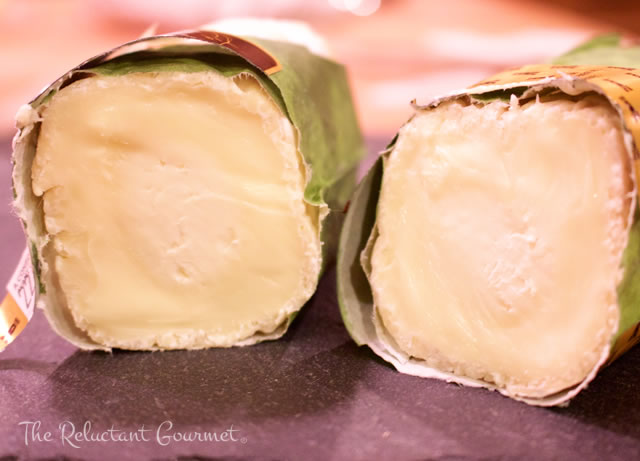
What Does It Taste Like?
Sainte Maure Caprifeuille cheese offers a unique and delightful taste experience. Its flavor profile is a harmonious combination of tangy and earthy notes. The creamy ivory interior is smooth and luscious on the palate.
The cheese imparts a pleasant, mild tanginess reminiscent of goat’s milk, balanced by subtle hints of earthiness and nuttiness. The cheese develops more complex flavors as it ages, deepening in richness and acquiring a slightly sharper taste. It delivers a delicate and nuanced taste that is satisfying and memorable, making it a favorite among cheese enthusiasts and connoisseurs.
What To Serve With Caprifeuille
Serving Suggestion | Description | Wine Pairing |
| Sliced on warm baguette or crostini | Let the cheese slightly melt on the bread to bring out its creamy texture | Sancerre or Pouilly-Fumé (Sauvignon Blanc) |
| With fresh herbs and olive oil | Drizzle with fruity olive oil and sprinkle thyme or herbes de Provence | Dry Rosé from Provence |
| Paired with roasted red peppers | The sweetness of the peppers balances the tang of the cheese | Côtes du Rhône white or light Grenache |
| Served with fresh figs or apricots | The fruit highlights the cheese’s natural sweetness and acidity | Alsace Pinot Gris or Chenin Blanc |
| On a salad with beets and arugula | Crumbled or sliced, it adds creaminess and bright contrast | White Bordeaux or a crisp Loire white |
| Baked in phyllo or puff pastry | Makes an elegant starter with a warm, gooey center | Champagne or Crémant de Loire |
| Served with honey and toasted almonds | Classic sweet-savory contrast perfect for a cheese course | Muscat Sec or off-dry Vouvray |
| Accompanied by olive tapenade | Savory and briny accents bring out the cheese’s depth | Vermentino or Picpoul de Pinet |
| On a cheeseboard with apple slices | Crisp apples cleanse the palate and complement the tang | Sauvignon Blanc or Chablis |
| With grilled vegetables or ratatouille | Works well with summery, herb-rich dishes | White Rhône blend or light Provençal white |
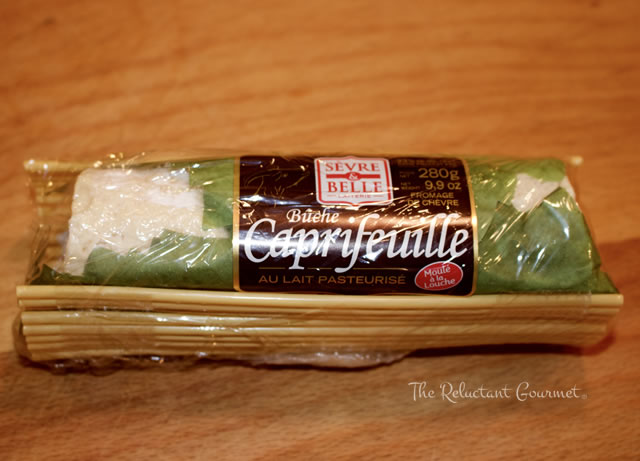
History
The history of Sainte Maure Caprifeuille cheese dates back several centuries. It is believed to have originated in the 8th century in the Loire Valley region of France.
The cheese comes from Sainte-Maure-de-Touraine, where local farmers traditionally produced it. Initially, it was made exclusively from goat’s milk, common livestock in the region.
The ash coating on the cheese’s rind served practical purposes, helping preserve and protect the delicate cheese during aging. Over time, Sainte Maure Caprifeuille gained popularity and recognition, becoming a cherished cheese in French gastronomy and eventually reaching international acclaim as a fine artisanal cheese. Today, it remains a symbol of the rich cheese-making heritage of the Loire Valley.
Where to Purchase Sainte-Maure Caprifeuille
I suggest you start with your local cheese shop if you have one near you. If they don’t sell the Caprifeuille, ask the manager to start bringing it in. They may or may not, but it’s worth the request.
You won’t find it in your everyday supermarket, but some high-end markets like Whole Foods or Wegmans should carry it. If everything doesn’t work, you can always order it online but be prepared to pay for overnight shipping.

